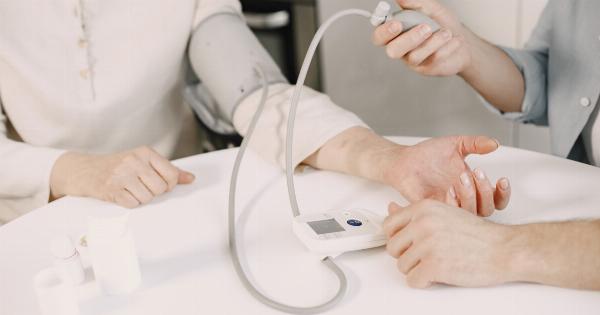Pulmonary hypertension is a chronic and life-threatening condition that causes elevated blood pressure in the arteries of the lungs, making it difficult for the heart to pump blood to the lungs.
Pulmonary hypertension is a rare condition that affects approximately 1% of the population and is more common in women than men. It ranges from mild to severe and is often a progressive disease.
The Symptoms of Pulmonary Hypertension
Pulmonary hypertension is a silent disease; many of the symptoms are often overlooked or attributed to other causes. Symptoms include:.
- Shortness of breath
- Fatigue
- Dizziness or lightheadedness
- Chest pain or pressure
- Fainting or passing out
- Fluid retention in the legs and abdomen
The Diagnosis of Pulmonary Hypertension
Pulmonary hypertension is diagnosed based on a combination of symptoms, medical history, and a variety of tests. These tests can include:.
- Echocardiogram
- Pulmonary function tests
- Blood tests
- Chest X-ray
- CT scan
- Right heart catheterization
The Treatment of Pulmonary Hypertension
The goal of treatment is to slow or stop the progression of the disease and improve quality of life. Treatment options include:.
- Medications to lower blood pressure in the lungs and increase blood flow
- Oxygen therapy
- Lung transplant or heart-lung transplant in severe cases
- Continuous intravenous infusion of epoprostenol for patients with PAH unresponsive to conventional therapy.
- Endothelin receptor antagonists bosentan, ambrisentan, and macitentan
- Phosphodiesterase type 5 inhibitors sildenafil, tadalafil, and vardenafil
The Unseen Burden of Pulmonary Hypertension on Patients and Caregivers
Pulmonary hypertension can have a significant impact on the daily lives of patients and their loved ones.
Physical Burden
Pulmonary hypertension can cause fatigue and shortness of breath, making simple tasks such as walking up stairs or carrying groceries a challenge.
Patients may need to use supplemental oxygen, which can have its own limitations and require additional equipment. In severe cases, patients may require a lung transplant or heart and lung transplant, which can be a major surgery with a long recovery time.
Emotional Burden
Living with a chronic illness can take a toll on mental health. Patients with pulmonary hypertension may experience depression, anxiety, or feelings of isolation.
Concerns about the future, including treatment options and prognosis, can also cause emotional distress. Caregivers and family members may also experience emotional strain and can benefit from support and counseling.
Financial Burden
The cost of treating pulmonary hypertension can be significant. Medications, tests, and hospitalizations can quickly add up, and many insurance plans have limits or exclusions for certain treatments.
Patients may also need to make modifications to their homes or vehicles to accommodate their condition, which can be costly.
The Importance of Support and Education for Patients and Caregivers
Pulmonary hypertension is a complex disease that requires ongoing management and care. Patients and caregivers can benefit from education and support from healthcare professionals and patient advocacy groups.
Education can help patients understand their condition, treatment options, and how to manage symptoms. Support from healthcare professionals can also help patients and caregivers navigate the healthcare system and access resources.
Patient advocacy groups can provide additional support and resources, as well as opportunities to connect with others living with pulmonary hypertension.
Conclusion
Pulmonary hypertension is a rare and life-threatening condition that can have a significant impact on the daily lives of patients and their loved ones.
It is important to raise awareness of this condition, improve diagnosis and treatment, and provide support and education for patients and caregivers.































